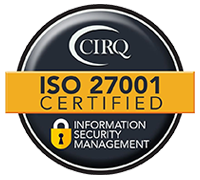B2B Qual – going beyond in-depth interviews
For the deepest, most comprehensive insights and personal opinions, it is difficult to beat the one-on-one interview. However, there are other options. Many people assume that B2B qualitative research cannot use the same variety of methods as B2C qual, or even B2B quant for that matter. While it’s true that the in-depth interview is a great way of gaining deep insights into a participant’s thoughts, the vast potential of the internet means there are more convenient ways to reach professionals with tight schedules across varying locations. Moreover, observational methods such as ethnography provide objective viewpoints of businesses that personal interviews may miss.
Admittedly, focus groups are less frequently used in B2B research than they are in B2C because of the time and geographical restrictions of participants. B2B projects often require researchers to reach senior staff members to provide insights on specific issues and these are, of course, the people with the busiest schedules who have little spare time to provide feedback. Moreover, geographical issues mean that even if spare time could be aligned between participants, there would be no convenient place for everyone to meet. This issue can be solved by holding online focus groups so participants can log in to a virtual research space wherever they are. And, to make sure participants join, remember to send a meeting request to participants’ work calendars so the event is firmly scheduled.
Even better, for those with extremely tight schedules, is holding an online discussion group, allowing participants from any location to add to the conversation at a time that suits them. This flexibility is important when respondents have little time to spare. It will allow them to give more thoughtful, meaningful responses without the pressures of time and what is more it means they can talk with each other in a secure and controlled environment. In an increasingly technological world, respondents often feel more comfortable giving their opinions to a faceless researcher online than they would to a real person who they may feel judged by. Another benefit to researchers is that participants who do not engage satisfactorily in the discussion can be replaced, ensuring that productive discussion takes place between the moderators and participants (and the participants and participants) so authentic insight can be gathered. This is also a great method for categorizing participants, as researchers can target specific group members with different questions to develop insight further.
Depending on your research problem, B2B ethnography is also a great method to consider. Although there can be a process involved in recruiting participants, a research technique that simply requires researchers to watch and learn is a great solution for participants with limited time as no changes to their normal habits are required. This technique is excellent for research problems that look to assess behavior in the workplace and to observe the intricate happenings within a business, without asking employees for their own personal opinions which may be wound up in internal politics. Ethnography is therefore a good way to get an objective B2B viewpoint.
So, although interviews are important in qualitative research, there are other, sometimes overlooked, methods which are a great fit for the B2B sector. We all know that working life is busy, especially if you’re the CEO, so resources like online tools are useful for bringing people together regardless of location – with online focus groups providing a universal research location, while online discussion groups allow research on demand for those whose unpredictable schedules mean they can’t commit to a specific time slot. And for objective, unopinionated research, why not try ethnography, to see the background of a business without working around the time restraints of employees.
To access more information on qualitative data collection tools, download our white paper on fieldwork and data collection in qualitative research here.















